From the November 2021 issue of Apollo. Preview and subscribe here.
The last time Tacita Dean saw Luchita Hurtado was ‘a beautiful LA day’, Dean tells me. ‘January 3rd, 2020.’ In the film Dean made that day at Hurtado’s apartment in Santa Monica you can see the bright yellow sunshine streaming through the windows casting quivering little patches of luminescence upon the walls and ceiling, each one deftly picked out by Dean’s roving 16mm camera. The film is called One Hundred and Fifty Years of Painting (2021), one of a number of new works by Dean (along with an assemblage of curios reproduced from the Getty Research Institute archives, from Mondrian’s carte de visite to Rodin’s studio key) currently at London’s Frith Street Gallery, and it captures a long conversation between Hurtado, a painter whose work was heralded as a ‘hot new discovery’ when she was 96 years old, and the artist Julie Mehretu (Dean’s long-time friend), about each other’s work and life: childhood, loss, former marriages, giving up smoking. Hurtado was 99 at the time and Mehretu 49. A few months later they were due to reach their century and half-century (respectively) on the same day, 28 November.
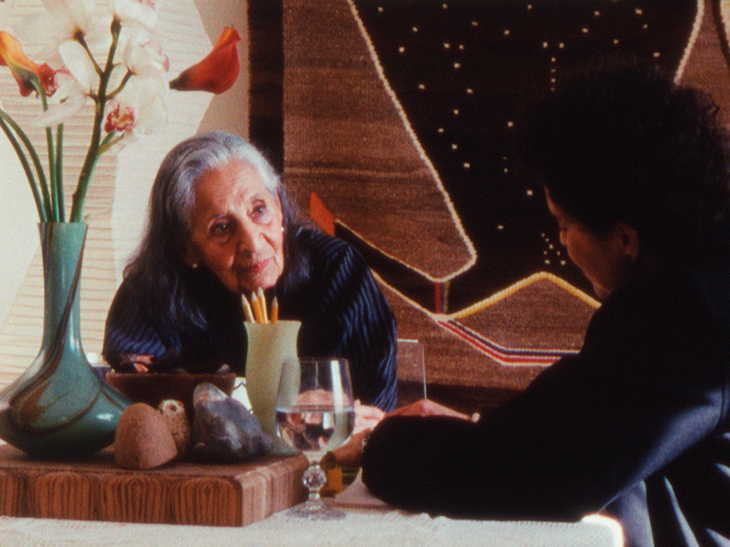
Still from One Hundred and Fifty Years of Painting (2021), Tacita Dean. Courtesy the artist; Frith Street Gallery, London; and Marian Goodman Gallery, New York/Paris
‘The title came before the film,’ Dean admits. ‘It was just irresistible. Had it been the day after or the day before, this film would never have happened. It’s about the coincidence of that day. I suddenly thought: one hundred and fifty years of painting! So I just did it, and it was a blessed day. Then we flew back to Berlin. Julie left to go back to New York. Everyone dispersed. Then by the beginning of March, we know what happened, and then of course Luchita didn’t make it.’ Hurtado died of natural causes on 13 August last year, 76 days short of her 100th birthday. Having walked out of her editing suite and closed the door at the start of the pandemic, only then, at the end of the summer, did Dean start to piece together the footage she had shot on that bright LA day at the start of the year.
Like Dean’s three simultaneous shows at three grand old institutions in London in 2018 – ‘STILL LIFE’, ‘LANDSCAPE’, and ‘PORTRAIT’– the title of her new film sounds like some big museum survey of oils on canvas. Dean calls it ‘a patriarchal title’, and here she adopts a gruff voice, like an elderly general in a Carry On film, ‘One hundred and fifty years of painting – that can’t have many women in it!’
‘So I love that,’ she continues, back in her own soft yet clipped English accent, ‘that it’s actually just about their lifespans.’ Whether it’s through her cinematic portraits of artists such as David Hockney or Mario Merz, or simply the fascination with the interaction between light and chemicals that her work on celluloid repeatedly betrays, Dean has consistently used film as a means of talking about painting. But she bristles when I ask her what film can say about painting that painting can’t say about itself. ‘I think painting can say it for itself very well, thank you very much!’ she says. ‘It’s more that I have to fight for the corner of film.’ By capturing something of the processes of painting and its subjects through the lens of a camera, she solicits for film something of the status of painting, too; renders it no longer a mere technology, but a medium – like gouache, oils, or tempera.
‘It’s always come from painting,’ Dean insists, even if nothing in her extant catalogue would be described as such. When she became a Royal Academician in 2008, she was classed as a ‘painter’. As an undergraduate at Falmouth College of Arts, she had been in the painting department. Even as a child, she recalls being ‘the kid who had an easel’, painting with Guitar-brand watercolours from Japan ‘when I was really young. It was encouraged,’ she says, ‘until it became dangerous. And then it was discouraged.’ Painting was all well and good as a childish hobby, but to pursue a career as an artist was quite another thing.
At one point in One Hundred and Fifty Years of Painting, Mehretu remembers how she first realised her calling as an artist. ‘How did it happen for you?’ she then asks Hurtado. ‘I think it was because I had a great sense of smell,’ the older woman replies. ‘I could smell a butterfly when it first left its cocoon. I caught it and pinned it to the wall because it was so beautiful. And this was the biggest sin I ever committed in my life. I did it to look at it.’
When I put the same question to Dean, she demurs. ‘I don’t have such a good answer,’ she replies, before immediately adding, ‘But I always knew. I just always wanted to be an artist. It’s a gift, I think, in life, to know what you want to do.’
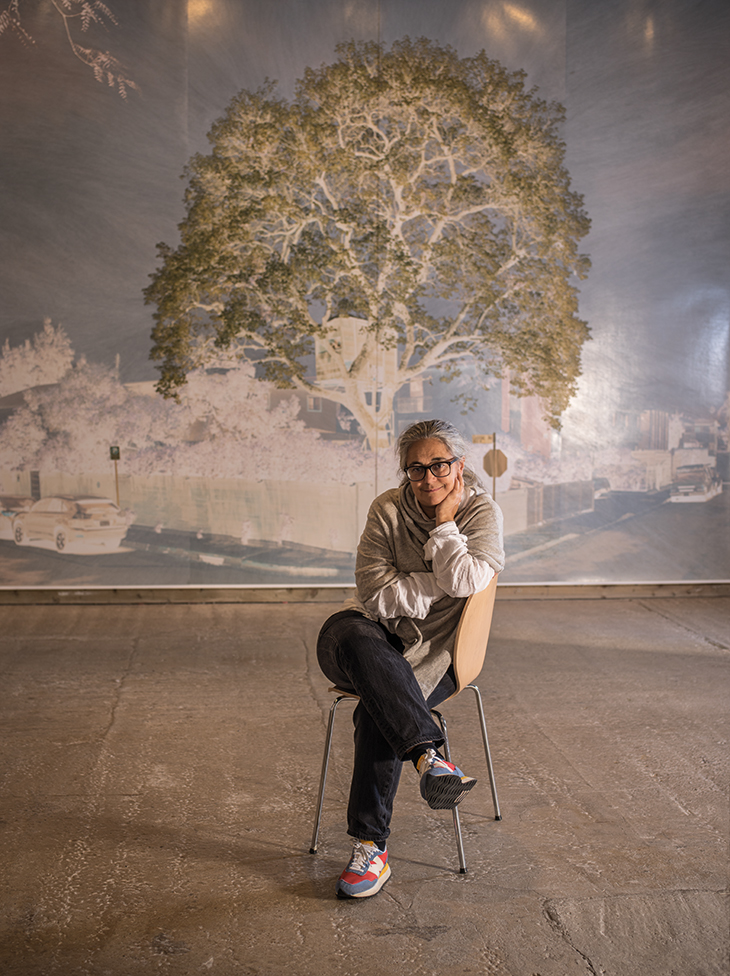
Tacita Dean, photographed in Frith Street Gallery’s Golden Square space in London, in October 2021. Behind her is one of the works in the Purgatory (2021) series. Photo: Jillian Edelstein
Dean was born in the Kent countryside in 1965, to Jenefer and Joseph Dean. Her father was a lawyer whose work frequently took him off to former British colonies in Africa and the West Indies. Writing his obituary for the Guardian in 2010, Tacita Dean said that he had ‘wanted to be an architect’ but was ultimately ‘forced to study law’. More resolute than her father, Dean herself would study art against her parents’ wishes. ‘I didn’t come from a family who thought it was a stable profession for a woman – wife would’ve been better,’ she says now, sardonically. ‘So then I had to fight for it, which of course makes things clearer.’
Dean doesn’t recall her parents taking a lot of pictures when she was a kid, and she still hates being photographed herself (‘Why can’t everyone just share their photographs?’ she complains when Apollo’s photographer arrives at Frith Street Gallery’s space on Golden Square, where we are meeting. ‘It’s such a bore!’). But her first film camera belonged to her father. She was 17 years old and she found an old wind-up Standard-8 camera in his study. Being clockwork, ‘it didn’t need a battery, so I put a film in that’. And away she went. She was still using the same camera when she did her postgraduate degree at the Slade. Ztráta (1991/2002), a black-and-white film made during a brief sojourn in Prague (the title is Czech for ‘loss’), was the last work she shot with it, and many of its motifs continue to resonate throughout her work: the play of light on surfaces, chalk on blackboards, the themes of absence and presence and loss itself.
If Dean has been a film-maker since her teens, she became a film activist only in 2011. It was a change of gear precipitated by loss. Having flown in to London in February of that year to complete post-production on a new film for an exhibition at Mumok in Vienna, she was distraught to find that Soho Film Lab, where she had processed and printed dozens of her works, had been bought by the American multinational Deluxe Media Inc. and was shutting down its 16mm printing service and accepting no new orders. Almost exactly a year after the paper published her father’s obituary, Dean found herself writing for the Guardian once more – this time with an impassioned call to ‘save celluloid’. She described the loss of the lab as ‘like having my bag stolen’ and bemoaned the loss of the UK’s last professional lab for the printing of 16mm film. ‘It’s so reductionist and stupid and short-sighted,’ she says to me, ‘but when the money people take control, that’s what happens.’ Her commission for the Tate Modern’s Turbine Hall later that year became an elegy for the departing medium, complete with visible sprocket holes running down the sides of the frame and a whole battery of analogue-specific techniques, like hand-tinting, glass-matte painting and aperture gate masking. It became a portrait of the medium itself, a project ‘about looking at early technologies and ways to manufacture images when it was an exciting new medium’.
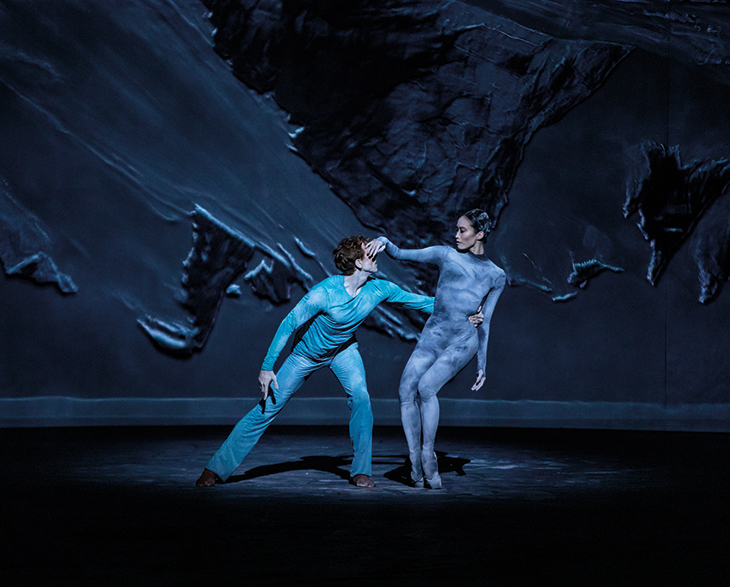
Fumi Kaneko and Edward Watson performing in The Dante Project (Inferno) at the Music Center, Los Angeles, in 2019, with set designs by Tacita Dean. Photo: Cheryl Mann
Many of those same techniques are in evidence in Dean’s newest major project: an adaptation of Dante’s Divine Comedy for the Royal Ballet, with music by Thomas Adès and choreography by Wayne McGregor (14 October–30 October). ‘Wayne wanted me – apparently,’ Dean says. They had initially been in talks about working together on McGregor’s Woolf Works ballet, which premiered in 2015. ‘I can’t remember what I was doing,’ Dean says, ‘but it was impossible.’ That didn’t work out, but a couple of years later he got back in touch. ‘It’s really, really an ambitious production – even for the Royal Ballet. So he asked me, and I thought, well, I’ll try anything once.’ Some years later and now in the thick of rehearsals and technical preparations for the show, I’m starting to wonder if she’s regretting it. Twice during our conversation she tells me how tired she is and as soon as we meet at the gallery, she slumps into the office sofa. Working on such a big production, with so many hands involved, and rehearsals just kicking into gear scarcely a fortnight before opening night certainly sounds exhausting. But she insists that she’s ‘loving the energy of the machine!’
What strikes me as Dean talks about her various ideas and inspirations for The Dante Project is that her starting point is never some overarching image or concept, but a quite specific technical intervention. As with much of her work – since FILM at the Turbine Hall, especially – the whole thing unfolds through a series of media-archaeological Verfremdunseffekts (distancing effects), in which techniques marshalled in pursuit of illusion during cinema’s pioneering phase are here repurposed as a means of highlighting the fabricated nature of the scene. She speaks of anamorphic projection, colour negatives, the flipping and switching of photographic imagery, and it’s clear that the matter at hand is less Dante’s emotional journey through heaven and hell, and more what Dean calls a ‘trajectory through mediums’. As the ballet progresses from Inferno, through Purgatory, to Paradise, the audience is borne from chalk drawing to photography to film, from black-and-white negative images to vivid full colour, from representation to abstraction. It is not so much the soul’s journey towards God, as art’s journey towards modernity. ‘I am always fascinated by how that particular thing might have been manufactured,’ she grants. ‘But this I made very much about medium, which for me has become a very political subject.’
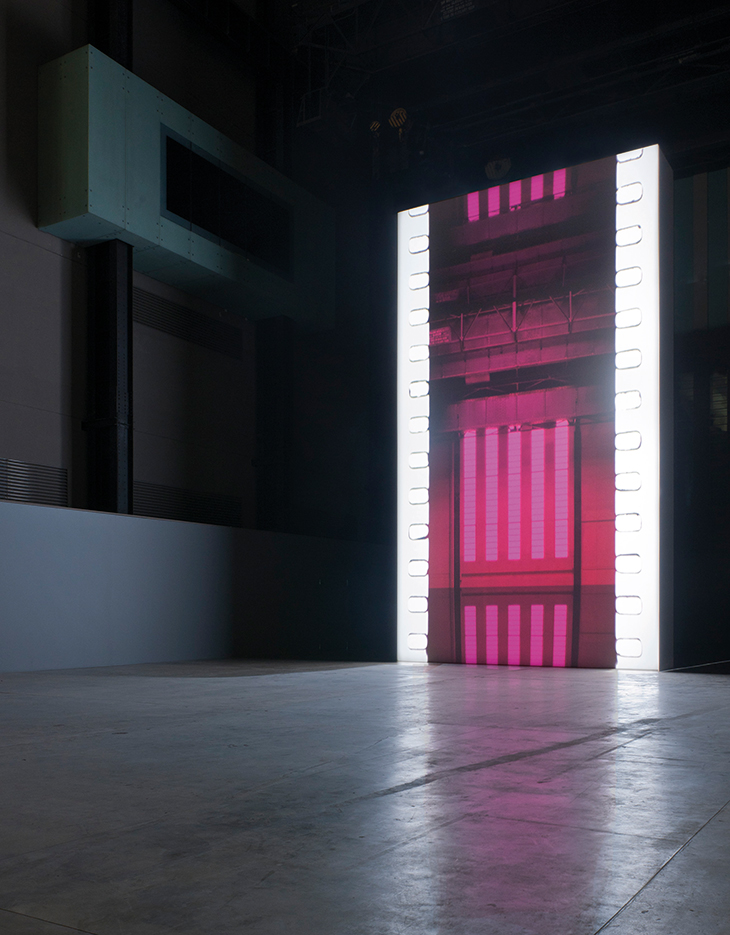
Installation view of FILM (2011), Tacita Dean, at the Turbine Hall at Tate Modern, London. Courtesy the artist; Frith Street Gallery, London; and Marian Goodman Gallery, New York/Paris
Dean’s campaign to save celluloid did not end with the Guardian article of 2011. Three years later, a residency at the Getty Research Institute in Los Angeles provided the opportunity to take the fight to the very heart of the cinema industry. What she found there was a profession ‘largely ignorant about [its] own medium’. Meeting with representatives from studios, archives and film schools, and engaging with discussions about the future of film, she found people ‘especially on the technical side were embarrassed to be seen to be working with film because they were called anti-technology and luddites and so on.’ What she came to realise was the importance of reframing that conversation away from talk of ‘technology’ – ‘the fact that they were calling film a “technology”,’ she says, ‘was really its death warrant’ – and towards an appreciation of film as a ‘medium’.
‘It was never a technology,’ Dean says. ‘By naming film a medium you immediately remove it from that deterministic trajectory towards obsolescence and you put it into a category with oil paints and marble. As soon as you say, no, it’s a medium and mediums don’t go obsolete, you suddenly empower it in an incredible way. So medium has become very important to me – and, of course, medium is very affiliated to the means by which you do it.’ Since starting her campaign, Dean has pulled in the support of several high-profile names, including Christopher Nolan, Steven Spielberg, and Paul Thomas Anderson, not to mention major institutions such as the Toronto International Film Festival, the British Society of Cinematographers, and the Louvre. But being in Hollywood has also thrown up some surprising opportunities.
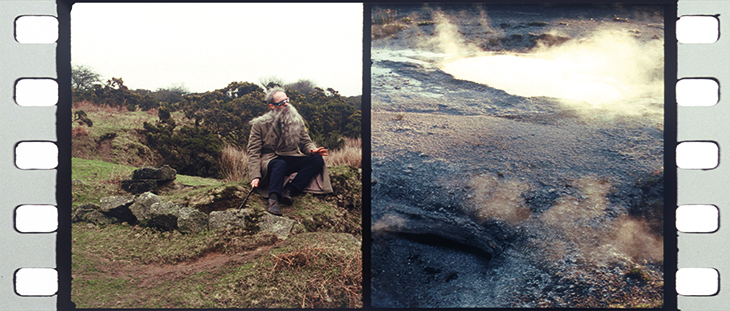
Still from Antigone (2018), Tacita Dean. Courtesy the artist; Frith Street Gallery, London; and Marian Goodman Gallery, New York/Paris
After graduating from the Slade in the early 1990s, Dean found herself lumped in with a new generation of so-called Young British Artists. Though her work was always quite far from the sensationalism of Damien Hirst or Tracey Emin, she was in the touring New Contemporaries show in 1992, and both the British contingent at Venice and the British Art Show in 1995. Several of her peers from that period have gone on to make major feature films, from the BAFTA-nominated Sam Taylor-Johnson (Nowhere Boy) to the Oscar-winning Steve McQueen (12 Years a Slave), and at one point it looked like there were further incursions into mainstream cinema on the way from Gillian Wearing and the Chapman brothers. Tacita Dean’s first overture from Tinseltown actually came much earlier than that. In 1997, she took up a surprise invitation to the prestigious Screenwriter’s Lab at the Sundance Institute. She arrived with a page-and-a-half-long treatment for a film called Antigone, based on the interval between Sophocles’ plays Oedipus Rex and Oedipus at Colonus, and left with notebooks stuffed with advice and encouragement but nothing concrete on the table and no completed screenplay. The following year she was nominated for the Turner Prize, and for the best part of a decade thoughts of Hollywood were put aside. And then she moved to Los Angeles (she splits her time between there and Berlin).
As a result of her campaigning, Dean says, ‘I was suddenly thrown into the industry and a lot of people said, what about making a feature film?’ With characteristic pluck, she dusted off her Sophocles notes from Sundance and set to work. But the resulting picture was never going to be a box-office smash. Shot in both the US and the UK, with the participation of the actor Stephen Dillane and poet Anne Carson, Antigone finally emerged as two hour-long films screened side by side on twin projectors. A dream-like collage of a film, it involves some of Dean’s most complex technical manipulations of the cinematic frame to date. Today, she calls it an act of ‘sabotage’. ‘Why couldn’t I do it?’ she asks. ‘Why did I have to sabotage myself the whole time – which I did.’ The work became ‘an investigation into why I so struggle with linear narrative’.
‘I realised,’ she concludes, ‘there’s something that just bores me about narrative cinema. I don’t know what it is. And that’s when I really knew, I’m actually just an artist. That’s it. That’s what I am.’
‘The Dante Project/One Hundred and Fifty Years of Painting’ and ‘Monet Hates Me/Pan Amicus’ are at Frith Street Gallery (Golden Square; Soho Square) from 17 September–13 November.
From the November 2021 issue of Apollo. Preview and subscribe here.
Unlimited access from just $16 every 3 months
Subscribe to get unlimited and exclusive access to the top art stories, interviews and exhibition reviews.

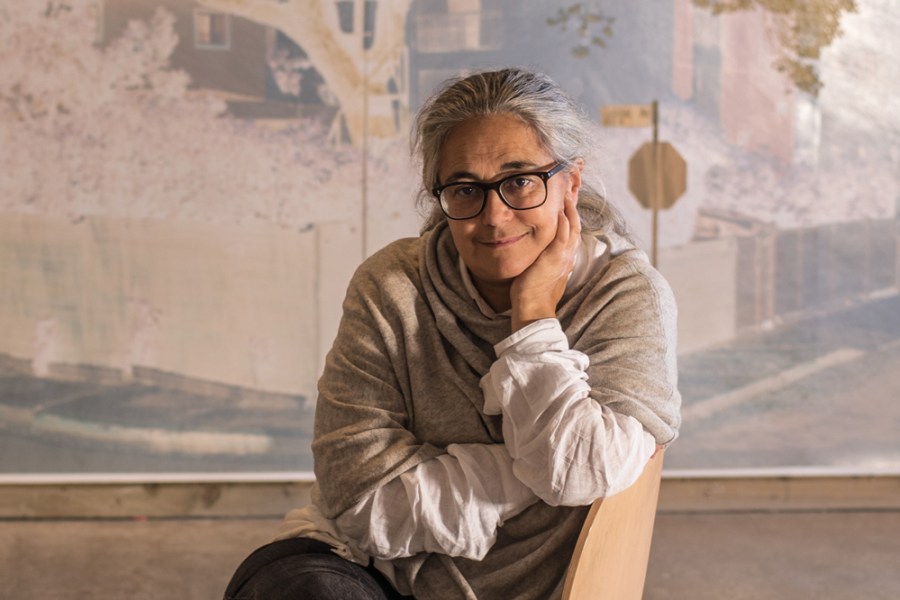
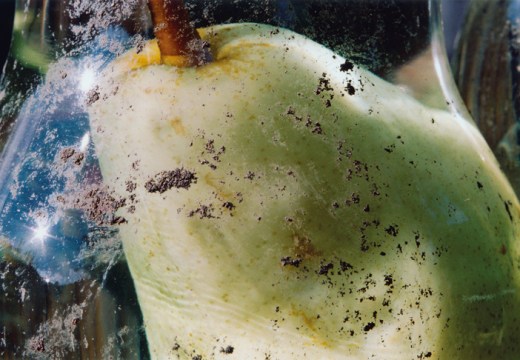
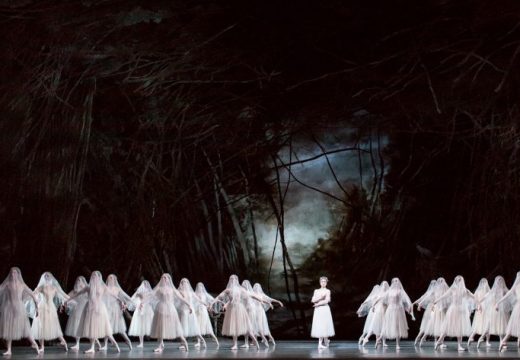
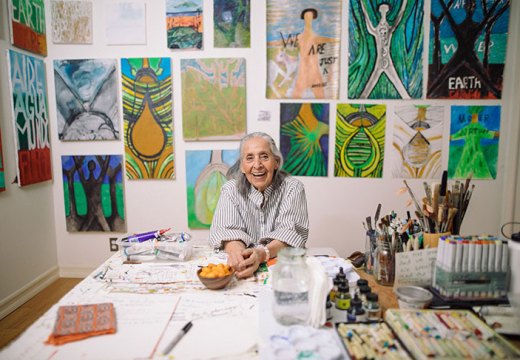









![Masterpiece [Re]discovery 2022. Photo: Ben Fisher Photography, courtesy of Masterpiece London](http://www.apollo-magazine.com/wp-content/uploads/2022/07/MPL2022_4263.jpg)
It’s time for the government of London to return to its rightful home